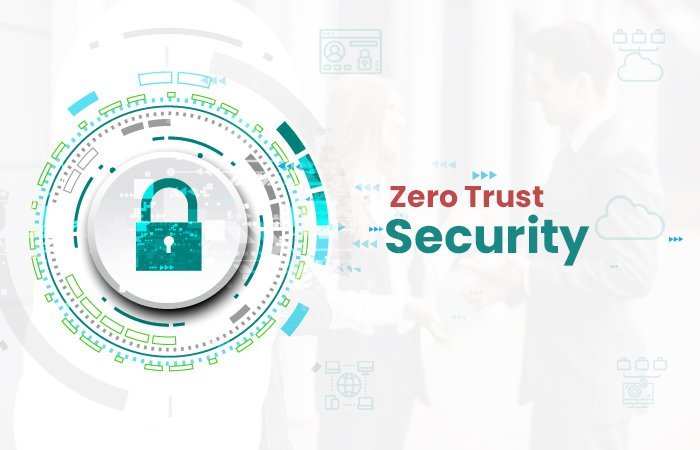As cyber threats become increasingly sophisticated, traditional perimeter-based security models are proving insufficient to protect against breaches and data theft. This has led to the rise of Zero Trust Architecture (ZTA), a cybersecurity framework that challenges the conventional "trust but verify" approach and instead adopts a "never trust, always verify" stance.
Zero Trust Architecture is a security concept and framework that requires all users, whether inside or outside the organization's network, to be authenticated, authorized, and continuously validated for security configuration and posture before being granted or keeping access to applications and data. The central principle of ZTA is that no entity, user, or device should be inherently trusted, regardless of whether it is located inside or outside the network perimeter.

In ZTA, robust Identity and Access Management (IAM) is crucial. This includes multifactor authentication (MFA), single sign-on (SSO), and the principle of least privilege, ensuring that users have only the minimum levels of access necessary to perform their job functions. IAM helps in verifying the identities of users and their permissions consistently, reducing the risk of unauthorized access.
Micro-segmentation involves dividing the network into smaller, isolated segments, thereby limiting the lateral movement of attackers and containing breaches to a smaller portion of the network. This technique ensures that even if one segment is compromised, the attacker cannot easily move to other parts of the network, thus enhancing overall security.
Continuous monitoring and verification are essential aspects of ZTA. It requires continuous monitoring of user activity and device health. Security measures must be adaptive, using real-time data to continuously assess trust and revalidate permissions. This approach ensures that any unusual activity is quickly detected and mitigated before it can cause significant damage.
Ensuring that all endpoints (devices that connect to the network) are secure is critical in ZTA. This involves regular updates, patching, and the use of advanced threat detection solutions. Endpoint security measures help in preventing malicious actors from exploiting vulnerabilities in devices to gain access to the network.
Protecting data through encryption, both at rest and in transit, and implementing strict access controls to prevent unauthorized access is fundamental to ZTA. This ensures that even if data is intercepted, it remains unreadable and secure, thus safeguarding sensitive information from being compromised.
Implementing Zero Trust Architecture requires a step-by-step approach. First, organizations should assess their current security landscape and identify critical assets, applications, and data. Developing a clear roadmap for Zero Trust implementation, prioritizing the most sensitive areas first, is essential for a smooth transition.
Next, strong IAM policies, including MFA and SSO, should be implemented. Adopting the principle of least privilege ensures users have only the access necessary for their roles, reducing the risk of insider threats. Following this, the network should be divided into micro-segments with clear security controls established between them. Network access controls should enforce policies and restrict unauthorized movement within the network.
Deploying continuous monitoring tools to track user activity and device health is the next step. Implementing real-time analytics and automated responses helps in detecting and mitigating threats promptly. Ensuring all devices are updated with the latest security patches and configurations is crucial for endpoint security. Using advanced endpoint detection and response (EDR) solutions helps identify and respond to potential threats effectively.
Encrypting sensitive data both at rest and in transit, and applying strict access controls, helps protect data from unauthorized access. Monitoring data access patterns to detect anomalies ensures that any suspicious activity is quickly identified and addressed.
The benefits of Zero Trust Architecture are numerous. It significantly enhances security posture by not trusting any entity by default, reducing the risk of breaches. Micro-segmentation and strict access controls minimize the points of vulnerability within the network, reducing the attack surface. Additionally, ZTA helps organizations meet regulatory requirements by ensuring robust security controls are in place. Continuous monitoring and adaptive policies allow for a proactive security stance, quickly addressing emerging threats.
Despite its benefits, implementing ZTA can be complex and resource-intensive. Organizations may face challenges such as integrating ZTA with legacy systems that were not designed with zero trust principles in mind. Shifting to a zero trust mindset requires a cultural change within the organization, which can be met with resistance from employees accustomed to more open access policies. Implementing ZTA also requires significant investment in technology and personnel training, making resource allocation a key consideration.
In conclusion, Zero Trust Architecture represents a paradigm shift in cybersecurity, moving away from traditional perimeter-based defenses to a more granular, robust approach. As cyber threats continue to evolve, adopting a zero trust stance can significantly enhance an organization's security posture, making it more resilient against modern attacks. While the journey to ZTA may be challenging, the long-term benefits of a secure, adaptive, and compliant security framework make it a crucial investment for any organization in today's digital landscape.





